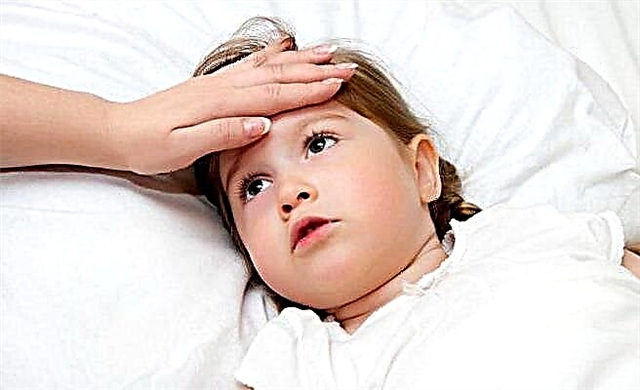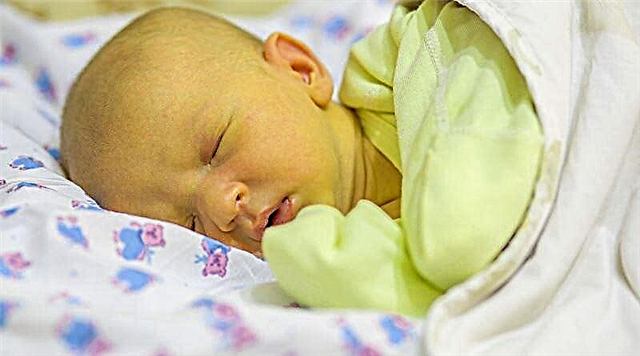When preparing for a vaccination or during any illness, parents contact a pediatrician. He conducts an examination and, if necessary, writes out a referral for the delivery of a general urine test (OAM). Thanks to such a study, the doctor will be able to correctly assess the general condition of the body, as well as monitor the correct functioning of the baby's urinary system. It is difficult for parents to understand the results of the test and determine what this may mean, and whether everything is in order. One of the unclear values is the urinary oxalate content.

Analyzes in a special container
What are oxalates
Oxalates in the urine of a child are calcium and ammonium salts of organic oxalic acid. These substances are contained in urine, and a certain amount of them will be in the child's urine.

Oxalates under the microscope
What method is found in urine
If there are no symptoms indicating that the urinary system is affected, then oxalic acid salts in the urine can be detected during a general urinalysis (OAM). General analysis of urine - a comprehensive study of the physical and chemical properties of urine, which also includes a microscopic examination of the sediment. Oxalates in baby's urine are often detected during urine microscopy.
Note! The composition of urine depends on whether the material for the study was collected correctly. It is worth heeding Komarovsky's advice and not using empty food or medicine jars for collection. You need to collect urine for analysis only in special containers that can be purchased at the pharmacy.
The norm of oxalates in the urine of an infant
As with any indicators, there are certain content norms for oxalates in urine, they directly depend on the child's age:
- For a baby under one year old, the norm is 1-1.3 mg / kg per day;
- For children under 3 years old, a little - 0.5 mg / kg per day.
Additional Information. Elevated oxalates in baby's urine can be detected after a nursing mother has eaten salty or spicy foods the day before. This will mean that the pediatrician must schedule a second test and advise the mother about her diet before submitting it. If after the second analysis the diagnosis is confirmed, the doctor must prescribe treatment for the little patient.
Oxalates in urine appear not only due to an ongoing disease in the body, they can be detected for other reasons. When collecting urine for research, you need to carefully consider the preparation for the delivery of an analysis for the presence of oxalates. To do this, you should:
- Collect all daily urine in only one absolutely sterile container;
- It is not necessary to collect the first morning portion of urine, start sampling only from the second urination;
- The last urine should be collected the next morning;
- Next, you need to mix all the daily urine in one container, take 100 ml and pour it into a special container for testing;
- Take the container with urine to the laboratory and write on it the total amount of urine per day.
Reasons for the appearance of oxalate salts
In children who are breastfed, oxalates in the urine most often appear due to improper nutrition of a nursing mother, but this may also indicate a pathology of metabolic processes in the baby's body. In addition, excess oxalic acid salts in the urine can occur due to congenital kidney disease.
Oxalaturia is divided into two types:
- Primary;
- Secondary.
Primary - considered congenital, it occurs due to a hereditary disorder of the metabolism of oxalic acid in the body. Secondary - appears due to the development of certain diseases or the use of certain foods.
A non-pathological cause of oxalaturia is the use of foods that are rich in oxalic acid by a nursing mother. These include tea, spinach, rhubarb, beets, chocolate.
Important! A nursing mother should know that all the nutrients and toxic substances from the foods she uses go into her milk.
Also, the reasons for the appearance of more than a moderate amount of oxalates in the urine of a child include:
- Congenital disorders in metabolic processes in which oxalic acid takes part. As a result, its excretion from the body is disrupted;
- Inflammation of the kidneys or intestines;
- Diabetes;
- Stones in the kidneys;
- Various chronic pathologies;
- Lack of B vitamins;
- Dysmetabolic nephropathy. It appears due to a hereditary predisposition or certain mutations in the genes of the infant;
- Dehydration, which leads to prolonged exposure to the hot sun, intestinal infection, fever with increased sweating, and insufficient drinking regime for babies.

Oxalaturia
Symptoms of oxalaturia in children
Parents should pay special attention to the baby's health if:
- The baby's urine has acquired a strong unpleasant odor;
- The color of the urine has changed from light yellow to dark yellow for no reason;
- The baby has a very frequent urge to urinate, while the total amount of urine has decreased markedly;
- The baby often cries, as he is worried about a sharp pain in the lower back or lower abdomen, which may indicate renal colic;
- The child's general condition worsened, apathy appeared, sleep was disturbed, and appetite disappeared.
Note! If even some of the above symptoms occur, parents need to consult a pediatrician as soon as possible and ask for a referral for a general urine test. If the diagnosis of oxalaturia is confirmed, appropriate measures should be taken immediately and treatment should be started.
Possible complications
Untimely or lack of any treatment can lead to the accumulation of salts in a small body, this will provoke the appearance of serious complications. The baby's oxalates will gradually accumulate in the kidneys and begin to form crystals, sand and stones. The formed stones lead to blockage of the urinary tract, this will be accompanied by very strong and sharp pain.
The sharp edges of the crystals will injure tissues and lead to bleeding, pyelonephritis, impaired kidney function and other diseases that cause inflammation of internal organs and tissues. Without proper treatment, the baby may experience renal failure, metabolic disorders and blockages of the urinary tract canals.
Prevention, features of the diet for HB
An increased amount of oxalates can be detected regardless of age. Very often they are found in the analysis of a breastfed baby. Oxaluria is very closely related to the diet of a nursing mother, because all the products she uses enter the baby's body with breast milk. Also, excessive formation of oxalates can occur with pathological processes in the kidneys, congenital metabolic disorders, unfavorable hereditary factors.
There are very few breastfeeding mothers who follow a certain diet during the breastfeeding period. Their food is familiar, without any limitation in something, they do not follow any diet. As a result, the baby's oxalate levels may rise above normal.
If the baby is breastfed, the nursing mother should follow a correct and balanced diet so as not to harm the body of her baby.
When oxalates are detected in a child, the mother should exclude sources of oxalic acid from her diet:
- Rhubarb;
- Sorrel;
- Spinach;
- Beets;
- Products containing cocoa;
- Parsley;
- Bow;
- Radish; rutabagas;
- Citrus;
- Sour berries;
- Plums;
- Almond;
- Green beans.
In addition, you should give up sour fruits, tomatoes, liver, coffee, strong tea. It is equally important to reduce your salt intake. If the disease progresses strongly, it is necessary to limit the diet of food that contains calcium in large quantities: dairy products, herbs, legumes, cereals, flour products. The minimum period for dieting is two weeks.
In the mother's diet, there must be such foods that contain vitamins A and B group, magnesium, potassium, protein. It is very important to consume grapes, quince, cabbage and potatoes, bananas, cucumbers and pumpkins, dried fruits, pears and apricots, vegetable oils and meat.
Important! For the child, parents must organize the correct sleep and rest regime, which provides for sufficient activity, walks in the fresh air are mandatory. The nursery should be kept cool and moderately damp. In terms of the environment, it is important to provide the child with psychological comfort.
Oxalates are very often detected in urine analysis in infants. Parents don't need to worry right away. This happens when the baby's mother violates the diet or improper collection of urine for analysis. If the diagnosis is confirmed again, it is important to follow all the doctor's recommendations: follow the correct diet and take medications.



